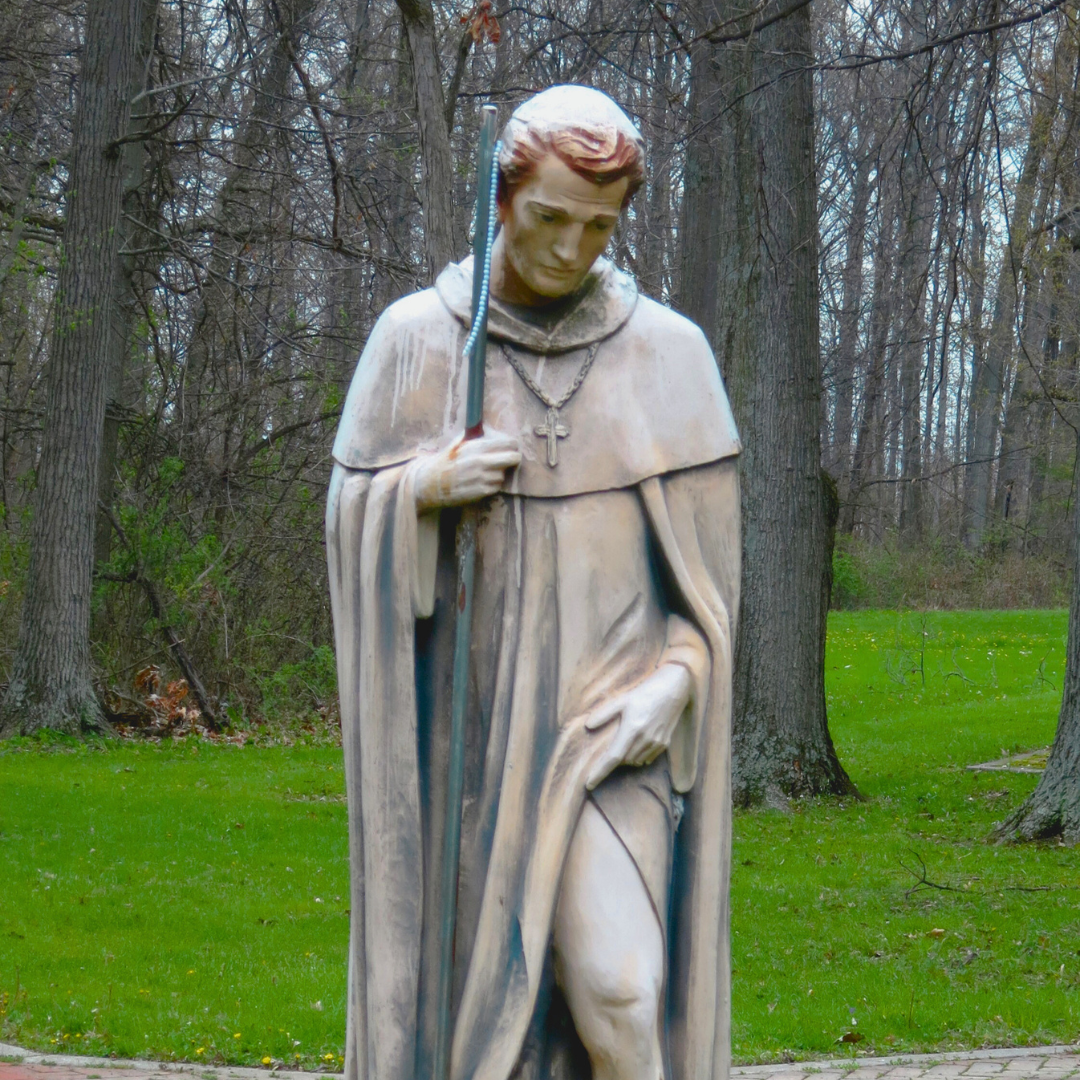
Susan Ciancio recaps the life story of Saint Peregrine, a worthy example of trust in God.
I have been praying for Saint Peregrine’s intercession quite often lately. Not only is he known as the patron of those with cancer, but he is also the patron of those with other illnesses. I am drawn by his beautiful story of faith and of how he placed his trust in the Lord.
Saint Peregrine Laziosi was born to wealthy parents in Forli, Italy, in 1265. While a teenager, he joined the anti-papists and led a group of rebels who protested the pope and his authority, even taking part in violent protests.
To quell the unrest in Forli, Pope Martin IV sent a Servite (Servant of Mary) priest named Philip Benizi to attempt to bring peace.
As Philip spoke to an angry crowd one day, some of the people began beating him with clubs and pelting him with rocks. Peregrine took part in this violence. He knocked Philip down by brutally hitting him on the head.
But at once Peregrine felt remorse. He bent down to help the priest, asking for forgiveness.
From that day forward, Peregrine was a changed man. Philip advised him to go to the local cathedral and pray for Mary’s intercession. While there one day, Peregrine had a vision of Our Lady holding a black habit—like the ones that the Servites wore. In the vision, she told Peregrine to go to Siena. Peregrine said that Mary told him: “There you will find devout men who call themselves my servants. Attach yourself to them.”
Peregrine did as Mary told him. Every day he worked at increasing his devotion and helping others. He had a special affinity for the poor and the sick, as he understood that all people matter, and all people have value.
He studied and became a priest. He even founded a monastery.
A few years after he founded the monastery, Peregrine noticed a cancerous growth on his right foot. The pain became unbearable, and he suffered greatly. Doctors had no recourse but to suggest amputation.
The night before the surgery, Peregrine prayed fervently. When he finally fell asleep, he dreamed that Christ got down off the cross and touched his foot, completely healing it. When he woke up, he found that his foot had, indeed, been healed.
Peregrine continued to work for the sick and the poor until his death on May 1, 1345.
Trusting in God
We can learn so much from St. Peregrine about suffering and about trust in God. Suffering is something we all go through. But it’s not something we have to go through alone. God is always there with us, as are the saints—especially saints like Peregrine. They understand our pain, our anguish, our sadness, and our frustration.
Trust in God is vital when we’re suffering. We know that, whether our suffering is mental, physical, or emotional, trusting in God’s love and mercy will help us derive good from it.
.png?width=1080&height=1080&name=20230710%20SCiancio%201%20(1).png)
How do we do this?
When we suffer, we can unite our suffering to Christ’s on the cross. We can offer up our sufferings for other people or for those suffering in purgatory. In doing so, we help alleviate the pain someone else feels. We help others grow closer to God. Or we help a poor soul in purgatory get a step closer to heaven. Knowing that we have helped someone, we begin to see suffering in a different way. We learn to derive joy as we help God create good from the bad.
These are important concepts for adults to understand. And they’re just as important for us to teach our kids. Life is often difficult. It can be physically and emotionally draining. We may feel alone. We may feel like God has abandoned us. But He will never abandon us. He is always there, carrying us through our trials.
Saints like Peregrine intercede on our behalf because they love us, and they know the suffering we face. Let us derive strength from the stories of the saints and from their examples, and let us vow to live our lives emulating the trust in God they exhibited.

Copyright 2023 Susan Ciancio
Images: Nheyob, CC BY-SA 4.0, via Wikimedia Commons
About the Author

Susan Ciancio
Susan Ciancio has a BA in psychology and a BA in sociology from the University of Notre Dame and a master’s in liberal studies from Indiana University. Since 2003, she has worked as a professional editor and writer. She is executive editor for the Culture of Life Studies Program and editor of ALL's Celebrate Life Magazine.


.png?width=1806&height=731&name=CatholicMom_hcfm_logo1_pos_871c_2728c%20(002).png)
Comments